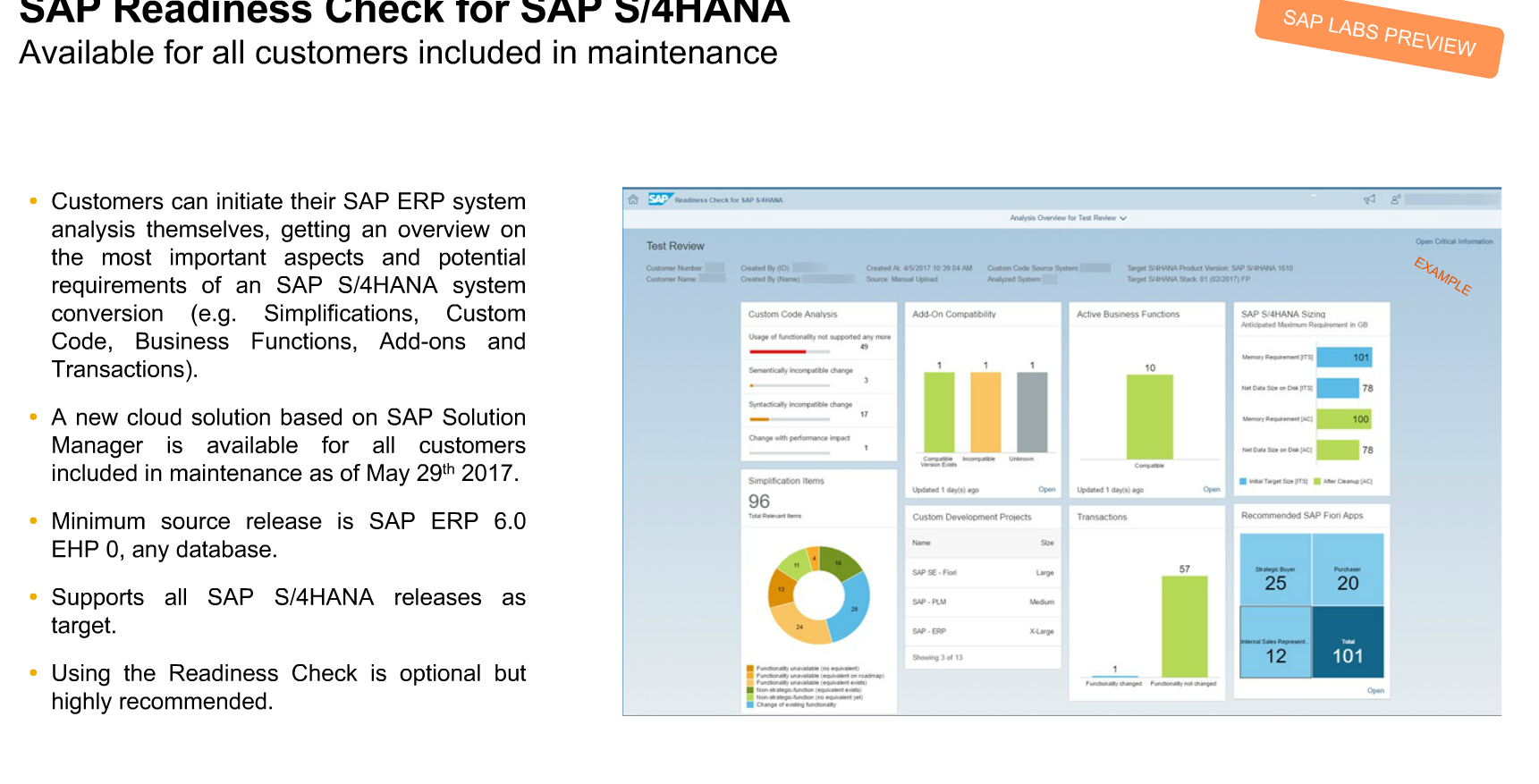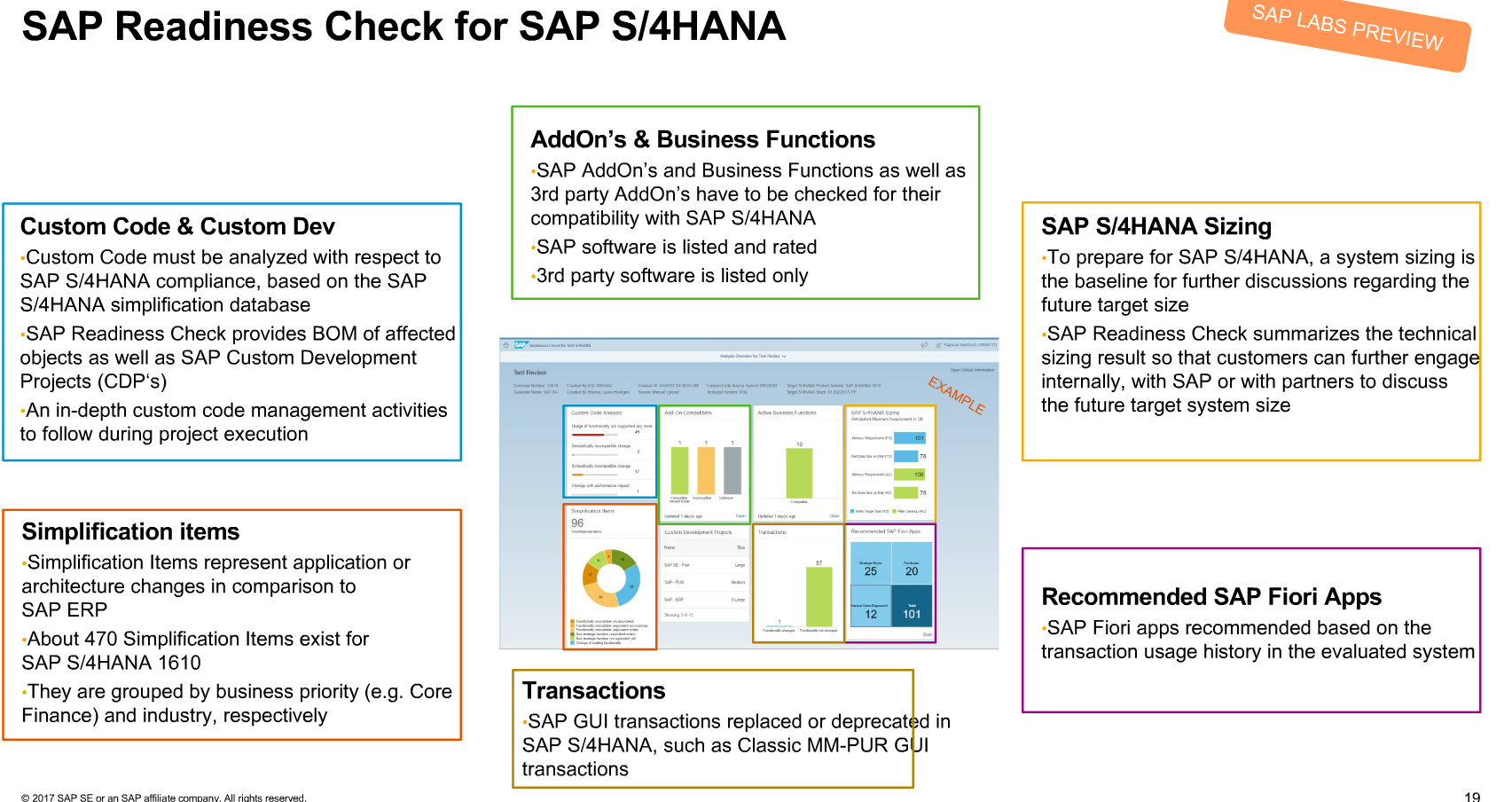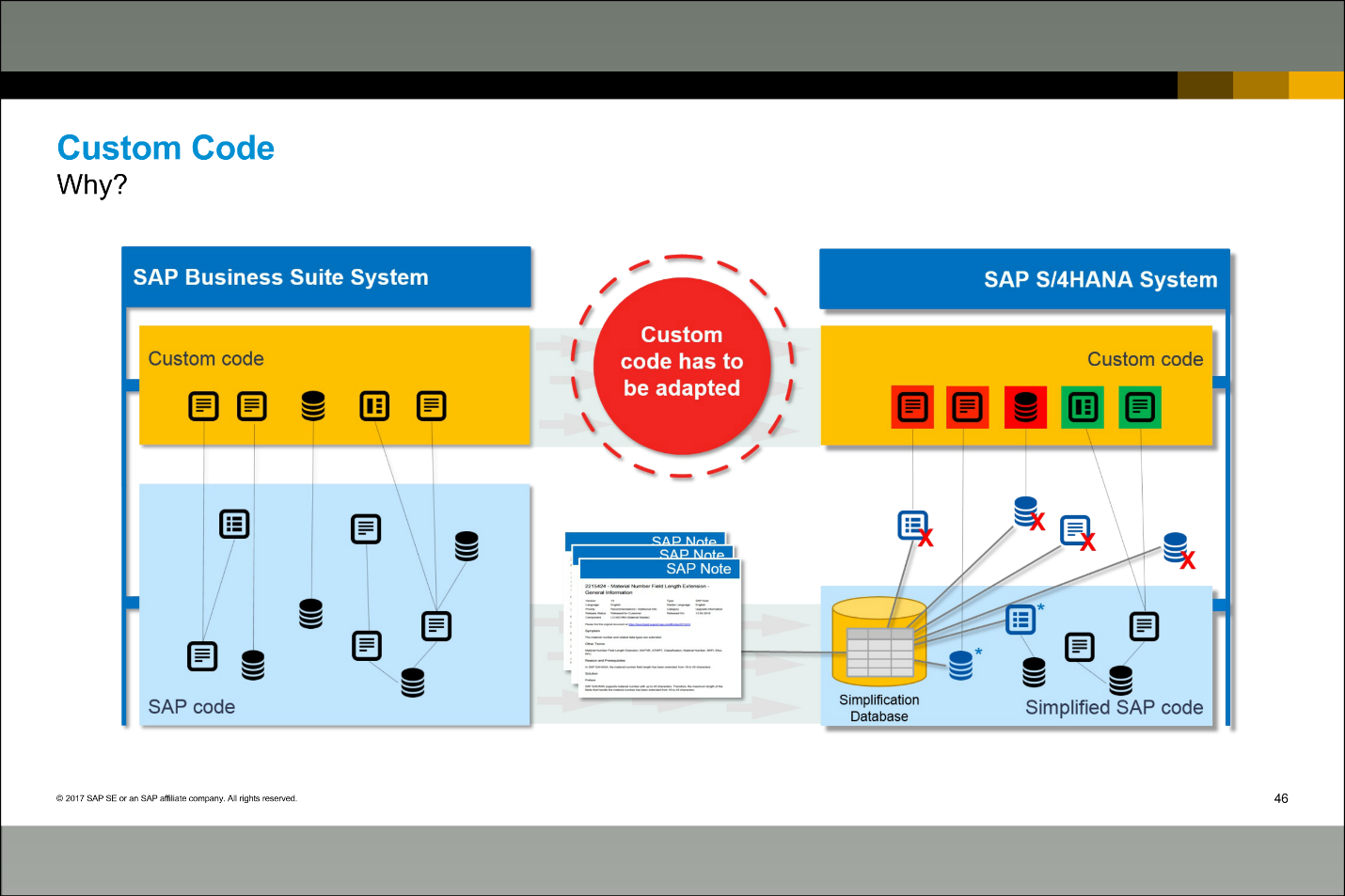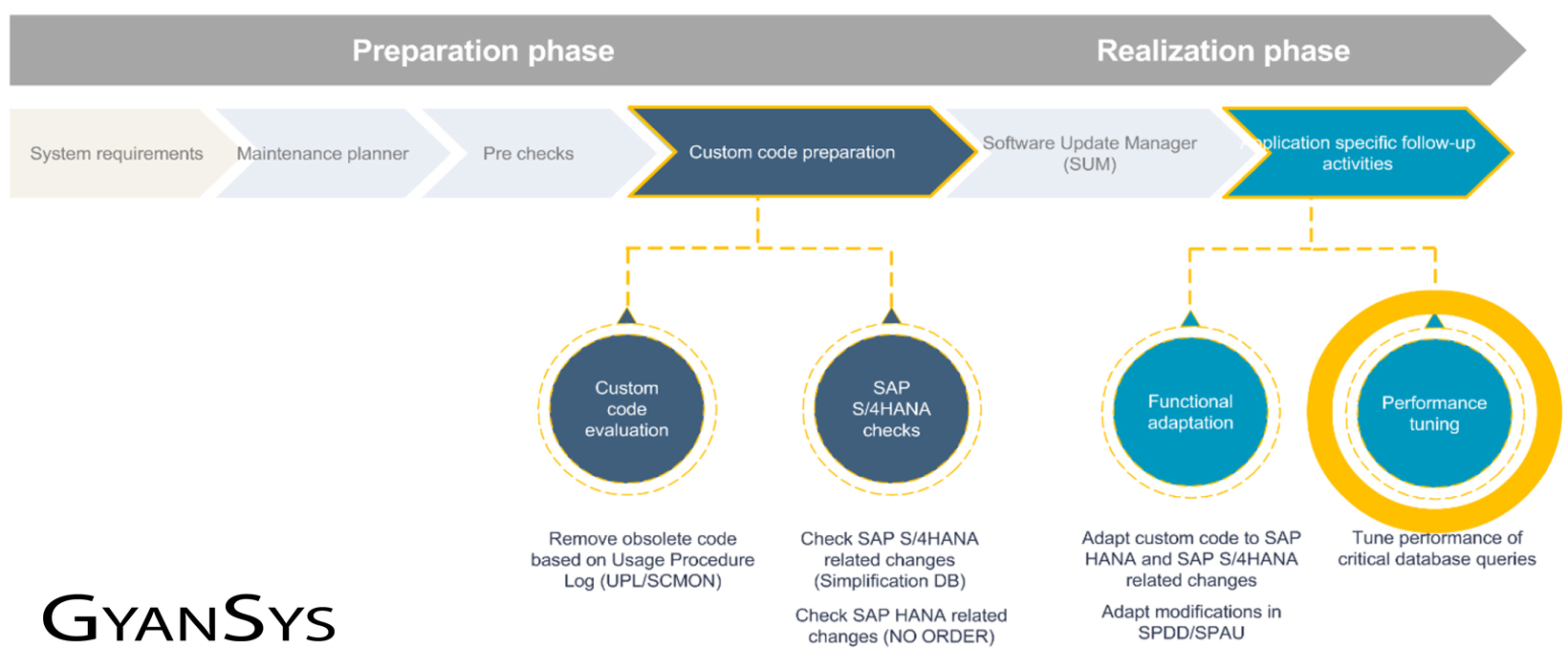Introduction
SAP introduced S/4 in 2015, termed a Simplified 4th generation ERP Business Suite. This is a major milestone in SAP’s ERP product evolution from R/2, R/3, and ECC to S/4. SAP reimagined all the processes with simplification and digitalization at the core and usage of the latest innovations in the speed of data processing, such as in-memory database – HANA, machine learning, and web-based & user-friendly GUI, such as Fiori. Two software versions are the going-forward strategy for SAP – the S/4 Cloud version with a quarterly release cycle and the S/4 on-premise version with a yearly upgrade cycle.
Companies with SAP as their ERP backbone for business are at a stage of looking into how to approach an S/4 upgrade or S/4 implementation. This document outlines a strategy and approach for their S/4 Roadmap.
Business Case
Comprehensive Business Case preparation is required for justifying the investment for an S/4 upgrade. Current in-flight projects, their importance, and relevance for Organizational Strategy would have an influence on the priority of an S/4 upgrade/implementation project. A true value assessment with the process and technical elements would provide a plan for capital budgeting for the organizational initiative. Once the justification is established, the next logical questions are "when" and "how".
- Ownership: Business Leadership or IT Leadership are the key decision makers who impact the overall strategy. While IT leadership has insight into technological advances, business leadership is the true justifier of the investment.
- Business Environment for Changes: Some organizations are early adopters of new innovations and others wait for the new offerings to mature. Early adoption induces some risks along with quick benefits.
- Examples: Companies that implemented Simple Finance early on had to undergo one more round of upgrades to S/4. Three versions of S/4 - 1511, 1610, and 1709. Business risk can be avoided if timing is correctly determined.
- Time - How long of a wait to upgrade? Systems are constantly changing. There is no perfect period for an upgrade as new versions evolve with time. The easiest upgrade is to go from the previous person to the next. If organizations wait too long, support costs escalate and future upgrade costs increase as well.
Strategy and Roadmap
While considering the most appropriate path for your organization to transition to SAP S/4HANA, two important decisions must be made:
- What version will you choose? The answer to this question is sometimes obvious – the latest version, but questions such as whether Cloud or On-premise
- One of our Greenfield implementations started with the 1511 version but had to go live with 1610 because is timing of the overall project determines which version. At the time of go-live, the latest version was 1709 but the project had to freeze to 1610, otherwise, the project go-live was at risk.
- What is your approach to transition? It is always the first choice to choose the version with a provision to go for the latest and then choose the approach for implementation. The following options need to be evaluated:
- Greenfield Implementation. This is the new implementation of S/4HANA into which data from a legacy ERP system is migrated. This is a natural choice for new SAP customers. Some of the existing Customers also adopt this approach to bury the shortcomings of their existing customization and adopt new innovations. This can be called “Clean Implementation”.
- Brownfield Implementation. This option is available for on-premise versions 1511 onwards and the transition of existing – ECC, Business Suite on HANA, and Simple Finance to S/4. Whether this is cost-effective or not depends on the current systems’ custom code and integration with 3rd party systems and solutions.
- Central Finance. If companies want quick benefits for consolidating their finance transactional process on existing ECC, and Business Suite systems, Central Finance scenarios provide quick benefits of S/4 and not having to immediately implement S/4 for their legacy systems. This scenario may be best suitable for companies with a heterogeneous system landscape and having different versions in different systems.
- Landscape Transformation. Companies with large-scale user bases with different regions, and multiple source systems must go with different approaches. These organizations may opt for consolidating all systems into a single S/4HANA instance and go with the transition to S/4 plans and may also adopt some mixed approaches of greenfield and brownfield, as suitable for their source systems.
Current Business Systems Assessment
Most organizations are confident about their understanding of their current system landscape. In reality, business systems, integrations, and processes evolve over a period and they remain more complex than they are visible. Different versions of software, heavy customization, and organizational silos add complexity to the current evaluation of your current business system landscape. A systematic assessment of your current business systems and their process inventory would help the true estimation of an S/4 project cost while also minimizing the business risk of disruption of technologies.
Strategy Towards Cloud Solutions
Cloud applications - such as Concur, Coupa, Salesforce, and Workday - have become common and standard cloud solutions. While undertaking a major project towards SAP S/4, it is important to investigate your business process portfolio and make an appropriate assessment of whether to switch any applications from traditional ERP to cloud-based solutions. As a common example, companies using SAP HR modules in ECC are now considering either going for SAP's cloud-based tool, SuccessFactors, or Workday. Since there are significant benefits for cloud applications and less maintenance, this decision has a greater impact on the overall strategy.
S/4 Assessment
Upgrading to S/4 is a significant investment in terms of resources, time, and cost for organizations. Performing a Business Value Assessment would provide insight into technological changes and impacts on business process changes. Looking into the current landscape of business systems, their level of software versions and integrations is a prerequisite for the successful adoption of S/4. SAP provides a simplification list in S/4 and provides details on how different elements changed.
Simplifications are categorized into the following based on the type of impact they have. Analyzing the simplification provides inputs into the overall roadmap and strategy on whether to go for a greenfield or brownfield implementation.
- Re-architecting SAP HANA in-memory platform: Applications are now optimized with new capabilities of SAP HANA as SAP HANA provides new database structures.
- Example: A Single Universal Journal table is provided for accounting, which eliminates data storage in multiple tables and reduces the financial closing cycles.
- Embedded Planning functions are some of the new business functions.
- Consolidation of existing functionalities: Underlying technical details changed, but, from an end-user perspective, the functionality remains the same.
- Example: Order-to-Cash functionality remains the same though the underlying tables for material documents have changed.
- No functional equivalent: There are some business processes eliminated from ECC. SAP provides alternative options, such as providing cloud solutions.
Simplifications Analysis provides a view of whether the organization is ready for an S/4 migration or not. If some processes used extensively in your current system are not available in S/4, it may not be the right time to upgrade unless alternative options are evaluated.
S/4 Conversion Components
For a conversion to be successful, the source system, custom code, and target system (simplifications) must be analyzed. During your analysis, you may come to realize that your custom code must be remediated. SAP suggests multiple iterations of testing until the system is ready for production. SAP provides various resources regarding this.
- System Conversion Guide: A PDF document with the required technical elements to be considered and a list of notes
- Simplification List: A PDF document and also available as a web-based tool.
- Migration Roadmap Viewer: An interactive tool that gives a clear visual view of migration activities
SAP Readiness Check for SAP HANA is a new cloud-based tool provided by SAP to perform Simplification item checks, custom code, recommended Fiori apps, and other compatibility comparisons/checks. SAP provides an ABAP report, which is an available check to be performed on systems 1709 and onwards.
System readiness check for HANA (cloud-based tool) provides a graphical view of different elements of custom code and other components.
Custom Code has to be adopted after conducting checks against the Simplification Database and remediate whether a specific custom code is needed. If functionality is changed, it needs to be evaluated from a functional process perspective whether this code is required to be adopted or dropped completely.
SAP S/4HANA - A Paradigm Shift and Your Journey
SAP S/4HANA simplifies many of the technical data models discussed above and best utilizes the in-memory database that contributes to speed and design thinking. As the technology landscape continues to change with cloud, big data, machine learning, robotic process automation (RPA), and process bots, business processes need an ERP system to support these technological advances. SAP S/4HANA provides these desired technological environments for businesses to adopt.
- Embedded Analytics - A major technical hurdle for businesses in earlier ERP systems was the time lag between transactional data and analytical data. SAP S/4 provides built-in tools for embedded analytics, eliminating the need for data replication as the reporting comes out with real-time data.
- Reconciled Data - SAP S/4 provides unified data structures and a single table data storage for Finance. There is no need for a reconciliation effort. This eliminates historical issues, such as reconciliation between the General Ledger and other reporting ledgers.
- Role-Based Fiori - Award-winning SAP S/4 Fiori is the standard GUI for all SAP products, including the SAP Support Portal. This standardization brings the user interface to the next level and is the most business-friendly & natural way to interact with business systems.
- Intelligent Fiori Apps - Fiori apps, when associated with KPIs, would automatically get updates and visually display key figures on its tiles. For example, Revenue figures can be seen on the dashboard without having to drill down to the application.
This blog post is part of GyanSys Solutions Lab's weekly series titled SAP S/4 1709 Simplification Digest. Contact us to learn more about changes in SAP S/4 1709 and how it impacts your organization.






